- Home
- P. T. Deutermann
Trial by Fire Page 16
Trial by Fire Read online
Page 16
Open your eyes, he told himself. He did.
He was hanging on to a snarl of snaking, which was a weblike band of marlin woven into a diamond lattice and stretched along the bottom rungs of the ship’s lifelines to provide a final handhold for someone about to be swept overboard in a seaway. The deck edge of the sponson was in his face while the rest of his body dangled over the cold sea below. For one giddy instant, he was tempted to just let go. This was all too Goddamned hard! But then he saw one of the ship’s fifty-foot-long whip antennas, still connected to its insulator base on the edge of the flight deck but now leaning down across the forward edge of the sponson deck. There were black bloody handprints all along its length.
He began to swing his legs back and forth like a pendulum until he could catch an ankle on the deck edge and heave himself back up onto the sponson. He relaxed for a moment after that big effort, only to realize he was beginning to slide right back over the side again.
“No!” he yelled, and then started clambering like a frenzied crab across the deck, skinning his hands, knees, and even a cheek on the steel surface, until he was able to grab that antenna.
It moved, starting a slow arc back toward the edge with the sudden weight. He yelled again: “No, no, no!” and then started kicking like a sprinter rising from the starting crouch with an amazing burst of adrenaline-inspired strength, until he’d pushed that antenna all the way to the top of the sponson, when he finally ran out of steam.
He lay there, gasping for breath, but now his seaboots were wedged against the deck so everything—himself, the antenna—had stopped moving. He looked up the length of the aluminum antenna, which resembled a fly-fishing rod. Its glass insulator base was mounted on the very edge of the flight deck, and that’s where he needed to be. The angle from the sponson to the flight deck catwalk was about sixty degrees. Not vertical, but near as dammit. He commanded his scorched hands to hold on and then he rested for a minute. The ship was moving around enough for him to feel it. It was getting really dark and there was a cold, wet wind blowing spray against his face. He knew there was no way he was strong enough to inchworm his way up that slender metal shaft.
Belt, he thought. Take off your belt, take a turn around the antenna shaft, grab the two ends, and then shove it upward and pull. And repeat. Let the antenna take your weight. Use your strength to pull yourself up the incline, one tug at a time. Become an inchworm.
Five painful minutes later he was able to roll off the antenna base and into a sagging catwalk. Where am I, he wondered. Starboard side. Forward of the island and the two forward five-inch mounts. He lay there in the catwalk, catching his breath.
Where the hell is everybody? he asked himself again. Three thousand, six hundred people on this ship, and now the only indication that he wasn’t completely alone was the glow of red lights in the pilothouse way up there on the top of the island. There was water in the catwalk, deeper on one side than the other due to the ship’s list. For a moment he submerged his face in it, letting the cold water refresh him. Then he soaked his hands.
“Okay,” he said to himself. “You’re not really wounded. Your arms and legs work. Time to stand the hell up and go forward.”
No, his brain argued. Go back to the island. Get inside. Rest.
No: forward, all the way to the bow. That’s where there’ll be people. Somebody had to be up there—they’d rigged a tow. Behind him was only death and destruction. The wind whipping over the darkened flight deck moaned through the remaining deck stanchions, making an almost anguished sound. You and me, brothers, he whispered. Then he stood up, weaving like a drunk.
He stumbled forward, holding on to both sides of the catwalk, until the catwalk itself ended. There were steel steps leading up to the actual flight deck. He struggled to climb them and then tried to stand upright. The starboard list made that hard, but the flight deck surface kept him from slipping. He went all the way forward and down a ladder into a small catwalk, where he found an open hatch that had been locked back. There was black soot all around the hatch coaming, but whatever fire had done that was no longer present. The smell coming from the vestibule was nauseating. A passageway inside led forward to yet another vestibule, where a hatch in the deck led down one level to the ship’s open-air forecastle and anchor windlass machinery platform under the flight deck overhang. The very front of the flight deck overhung the forecastle by about sixty feet.
A heavy cruiser was off the port bow about six hundred feet away. There was a small group of boatswain mates keeping an eye on the anchor chain, which was now threaded through the bullnose instead of its hawsepipe. The chain was tending toward the cruiser, but J.R. got the impression that the carrier was jerking the cruiser around every time a deep swell slapped up against her bow and blew salt spray all over the forecastle. A boatswain mate first class spotted him.
“Where’d you come from, shipmate?” he asked. Then he realized J.R. was wearing khaki. “Sorry, sir, I meant—”
J.R. waved him off. “I’ve been inside, getting people off the messdecks. Where the hell is everybody?”
“On the Santa Fe or one of those destroyers out there. Or just gone. The rest of my guys were sent down to see about an emergency diesel generator. Bridge is desperate for power, but my guys are all deck apes, you know?”
“I’m a snipe,” J.R. said. “Can someone lead me down there? I couldn’t recognize where I was in that passageway back there.”
“Take you myself, Lieutenant,” the bosun said. “And if you think that passageway is bad, wait’ll you see the hangar bays.”
Five minutes later he was standing in the forward emergency diesel generator compartment, where, to his astonishment, the big 250,000-watt generator was humming happily away. The bosun explained to the small crowd of deck seamen that someone from engineering had arrived. They appeared to be greatly relieved. J.R. spotted one of them wearing a set of sound-powered phones.
“Who you talking to?” he asked the seaman, who appeared to be about fifteen years old.
“The bridge, sir,” the kid said. Then his eyes widened. “Sir? The XO’s on the line. The XO, himself.”
J.R. took the headset and put it on. He called the bridge. George answered immediately. “Who’s this?” he asked.
“Sir, this is Lieutenant McCauley, fire marshal. I just got here from amidships.”
“How?”
“The hard way, XO. The really hard way.”
“Okay,” George said. “They’re telling me that generator is running?”
“Yes, sir, it is, but it’s running at no-load. Its switchboard’s been cleared. I can put it on the line, but we’ll have to limit the loads—this engine can’t carry the whole ship.”
“Right,” George said. “Here’s the deal: We’ve got a skeleton crew in number two fireroom. They think they can get a boiler lit off, but they have no electrical power. Can you make that happen?”
“I think so, XO,” J.R. said. “Gimme a minute to ID the circuits this thing can supply.”
“Standing by, Mister McCauley.”
J.R. told the bosun he could take his people back up to the forecastle. They did not linger. The emergency diesel’s main breaker was easily identifiable, but the individual circuit breakers were not labeled except with a number. He went around to the side of the switchboard to examine the breaker chart. He knew there was a better-than-even chance that electrical supply cables running from the forward emergency diesel had been burned away. He was hoping to find a breaker labeled number two fireroom, but instead there were breakers for Radio Central, sick bay, the bridge, one twin five-inch mount, and the Combat Information Center. No help. He stared down at the chart and then realized he was looking at the chart for the after diesel. He went back around to the front of the switchboard. There was one large breaker with a red tab on it at the very end of the breaker row, marked M.E. Back to the chart. Wrong chart, his tired brain told him. No breaker labeled M.E.
He looked some more, then spied a thre
e-ring binder hanging on a small stand-up desk beside the switchboard. It contained wiring diagrams for the forward diesel switchboard. The spidery lines on the chart went fuzzy the more he looked at them. He sighed. This was electrical gang stuff. He flipped through the pages of crisscrossed lines and arcane symbols until he came to the last page. He stared, mentally yelling at his eyes to focus. The title of the page was Main Engineering Bus. Main Engineering: M.E.
The diagram below was as simple as it could be: one red line running through all six main engineering spaces, from the forward auxiliary through numbers one and two firerooms, number one engine room, numbers three and four firerooms, number two engine room, and, finally, the after auxiliary space. There were switchboards in each of the spaces, which could be fed from either the forward or the after emergency generators. J.R. was pretty sure that the after emergency diesel probably no longer existed, since everything aft of the island had been turned into an open-hearth furnace. But—if he closed the M.E. breaker, number two fireroom’s switchboard should go hot. That meant they could light off a boiler. Then a team would have to get into number one engine room, and bring that space back to life, including the big ship’s service turbo-generator that lived there. That would provide 1,500,000 watts of power, enough to get the rest of the plant going.
This all assumed that the main engineering bus was intact, and, even more worrying, that the crews abandoning the eight main spaces had taken the time to clear their switchboards. If all six main spaces’ worth of electrical demand suddenly lit up, the forward emergency diesel would trip right off the line and probably jump overboard. He slumped down into a crouching position. His very bones ached. He decided to call the XO again.
“Do it,” George said after listening to J.R.’s explanation of what they were facing. “And here’s why: if any given main space’s switchboard senses that the voltage is inadequate, it will trip its main breaker. Then all two firehouse has to do is re-energize their board.”
“Yessir,” J.R. said, in a distinctly if-you-say-so voice. “Can you inform two firehouse to man their board?”
“Yup,” George said. “And very well done, Mister McCauley. If you can make your way to the bridge, do so. The chief engineer and a lot of his people are trapped in the Log Room because of passageway fires and smoke. I need a snipe up here.”
“Aye, aye, sir,” J.R. replied, and then threw the M.E. breaker.
Nothing happened. The generator didn’t try to jump off its pad and the diesel engine barely wavered. That meant one of two things, J.R. thought: either the generator wasn’t actually physically connected to anything at all, or the main space crews had cleared their boards. Training, he thought. Well, we’re gonna find out.
30
“What’s that?” the chief asked, looking over Gary’s shoulder. Gary turned to see. There was a dim yellow glow coming from the upper level. It was hard to see because there was still a wet, smoky haze enveloping the upper level of the fireroom.
“That’s our switchboard,” Gary said. Then the talker confirmed that the forward diesel was sending power to the main spaces.
“Hot damn,” the chief said. “Let’s go to town.”
They then went up to the fireroom switchboard. It was hotter and harder to breathe on the upper level, and there was a strong, sickening stink of oil smoke, producing instant headaches. That yellow light meant there was power available from the M.E. circuit. They closed the board’s emergency power breaker. A red light then glowed above the board’s main breaker.
“Now,” Gary said. “Let’s make this whole board hot and get two-Baker lit off.”
“Okay,” the chief said. “Just one thing: where we gonna get combustion air? The uptakes are torn all to hell.”
“The lightoff blower will tell the tale, Chief,” Gary said. “The boiler doesn’t care where the air comes from. The real problem will come when the boiler starts making smoke. That shit’s gonna go everywhere.”
“How would anybody know?” the chief asked.
Gary just stared at him. How indeed: after what had been happening all day, a little boiler exhaust would be hardly noticeable. The chief was grinning at him, albeit with a fine white line of hysteria in his eyes. Gary punched him lightly in the chest. “Turn to and go make us some Goddamned steam,” he ordered.
“Goddamned steam, aye, sir,” the chief replied.
For the next hour the chief had his crew cleaning out the firebox of 2B boiler, which had the least amount of water in it. Two men had had to crawl through a burner front with swabs to dry down the brickwork and get the last of the standing water out of the firebox. Others had had to disassemble burner assemblies to rid them of saltwater residue. The light-off blower fan motor was completely grounded out with salt, so they had to take a motor off another, dryer pump and swap that out with the grounded one.
Once the switchboard went hot, they had lights, which, for some reason, improved everyone’s attitude. There was still no ventilation because Gary wanted to make sure he didn’t overload that diesel generator up forward. Finally, they were ready. The light-off blower was lined up to the air registers. The burner assemblies were in place and lined up to the fuel manifold, just waiting for pressure from the light-off fuel pump. Ordinarily they would have taken the time to pass the fuel oil through heaters, because Navy Special Fuel Oil was extremely viscous. But when Gary had ordered the fuel oil heater lit off, the lights had dimmed. They were just going to have to make do. Like they’d done with feedwater. Again, ordinarily they would have filled the boiler with pure, distilled water. As it was, they’d tapped the closest feedwater bottom in order to fill the boiler. The quality of that water was necessarily unknown.
Lighting off a marine boiler was a bootstrap operation. Start with small pumps and blowers, fill the boiler, close the main steam line stops, and throw the torch in. Once steam pressure began to rise, they’d gradually switch over to the bigger, steam-driven pumps—fuel oil service, feedwater main booster, and, eventually, the turbine-driven main-feed pumps and forced-draft blowers for combustion air. As these bigger auxiliaries came on the line, they’d create low-pressure auxiliary steam from their turbine drains. Once that was available, they could light off the deareating feed tank and use what they called aux steam to scrub any entrained oxygen out of the incoming feedwater. Eventually, the boiler would reach 600 psi and then they’d cut in the superheater burners. Main steam, 600 psi and 850 degrees hot, would become available after about twenty minutes.
The initial “customers” for main steam would be the turbine-driven main-feed pumps and the forced-draft blowers. Next would be the 1,500-kilowatt ship’s service turbo-generator sitting in the number one engine room right behind them. Once that generator’s board went hot, there’d be serious power available throughout the plant. Other main spaces could be re-manned and lit off. As for the rest of the ship, everything depended on whether or not the cabling ship-wide was still intact. Gary knew that couldn’t possibly be the case, but one step at a time. And finally, with main steam being produced in a fireroom, the nearest two main-engine turbines could be brought back to life, which in turn would mean two of the ship’s four propellers could be rolled.
Gary knew it would take hours—perhaps even all night—to get just this boiler room up and running. But when that torch went into the firebox and produced the familiar whump, he knew Franklin now might just have a chance to escape. The next step would be to get a crew into the number one engine room, so that the machinery then could be warmed up and made ready for main steam. His gang was looking around and nodding at each other. There was fire in the box, the steam gauge needle had trembled off its pin on its way to 600 psi, and one of the young firemen was holding up a cannister of coffee-makings. What more could any snipe want?
31
George exhaled in relief when the word came up that fires had been lighted under number two boiler. He walked over to tell the captain but found him asleep in his chair. His steward had brought him a sandwi
ch and some coffee; he’d eaten half the sandwich and then fallen asleep. George decided to let sleeping dogs lie, but did relieve the captain of the other half of that sandwich and the cold coffee.
Pittsburgh by then had gained a semblance of control over her 36,000-ton burden, but only after George had dispatched a team to after-steering to hand-crank the ship’s thirty-ton rudder three degrees to starboard, which finally offset the mischief the wind was making. They were now making a grand two knots. He walked out onto the port bridgewing. The ship was under tow with only a tiny bit of electricity available. The fires were out on the flight deck, but there remained an ominous red glow visible in the ruined elevator pits and smoke was still boiling out of one of the hangar bay side doors. Two much-depleted firefighting crews were pointing hoses down into the hangar bay, their fire mains powered by a clutch of gasoline-powered pumps set up out on an undamaged sponson and that other mysterious source of power from back aft, probably the after-diesel. He’d asked his emergency-steering team to confirm that.
Damage Control Central was reporting that they were still trapped in their spaces due to there being no oxygen in the outside passageways. Also, what was left of the repair parties were reporting that the P-250s and the P-500s were running out of gasoline. Great, he thought. He looked out to where the horizon should be. Fortunately, it was darker than that apocryphal well-digger’s behind. The ship’s one remaining radar showed that there were now four destroyers creeping along with their grievously wounded carrier, keeping station 1,000 yards off her port and starboard sides. There were two more ahead of Pittsburgh, close in, to augment her air defenses. Unable to maneuver, both the cruiser and the carrier were essentially defenseless.
The weather was neither better nor worse. The rain squalls had diminished somewhat as darkness fell, but the God-sent overcast remained, with low-flying scud maintaining a ceiling of what looked to be about 1,000 feet. The forward emergency diesel generator had allowed flag plot and the secondary CIC right behind the bridge to light back up, although the air-search radars were still not functioning. This allowed the bridge team to listen in to the task force air defense net, where there were indications of yet another major raid inbound. George got a whiff of stack gas. He looked aft to the top of the island, but the smoke wasn’t coming from there. Then he saw a grayish cloud puff out of the top of the island. Then another, bigger one huffed out right at flight deck level. The uptakes had been ruptured, and that boiler was sending stack gas wherever it could.

 The Nugget
The Nugget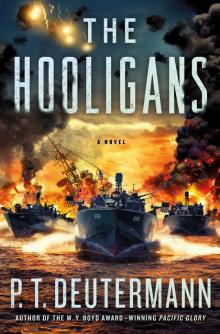 The Hooligans
The Hooligans SPIDER MOUNTAIN
SPIDER MOUNTAIN![Cold Frame [retail] Read online](http://i1.bookreadfree.com/i/03/19/cold_frame_retail_preview.jpg) Cold Frame [retail]
Cold Frame [retail] Sweepers
Sweepers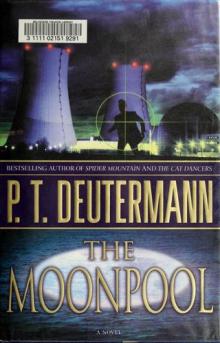 Cam - 03 - The Moonpool
Cam - 03 - The Moonpool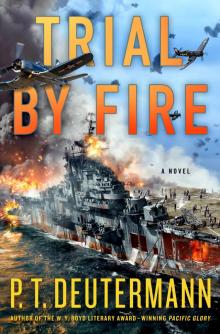 Trial by Fire
Trial by Fire Cold Frame
Cold Frame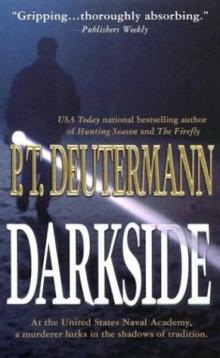 Darkside
Darkside Cam - 04 - Nightwalkers
Cam - 04 - Nightwalkers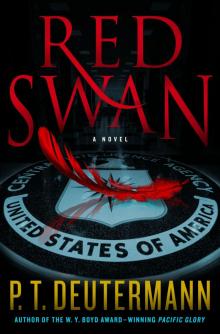 Red Swan
Red Swan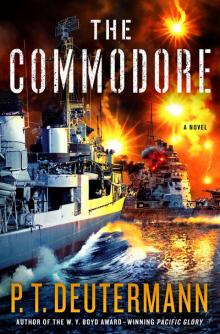 The Commodore
The Commodore Hunting Season
Hunting Season The Cat Dancers
The Cat Dancers Scorpion in the Sea
Scorpion in the Sea The Edge of Honor
The Edge of Honor The Cat Dancers cr-1
The Cat Dancers cr-1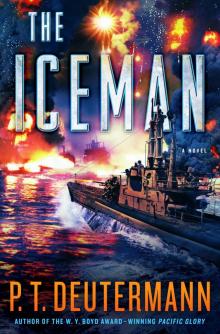 The Iceman
The Iceman The Iceman_A Novel
The Iceman_A Novel Official Privilege
Official Privilege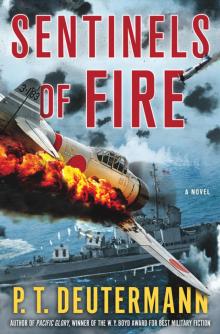 Sentinels of Fire
Sentinels of Fire The Moonpool cr-3
The Moonpool cr-3 Nightwalkers cr-4
Nightwalkers cr-4 The Firefly
The Firefly Spider mountain cr-2
Spider mountain cr-2 Pacific Glory
Pacific Glory The Last Man
The Last Man